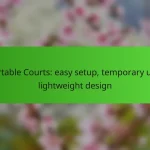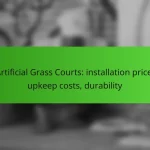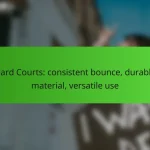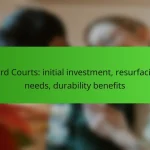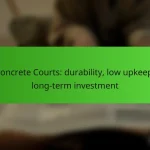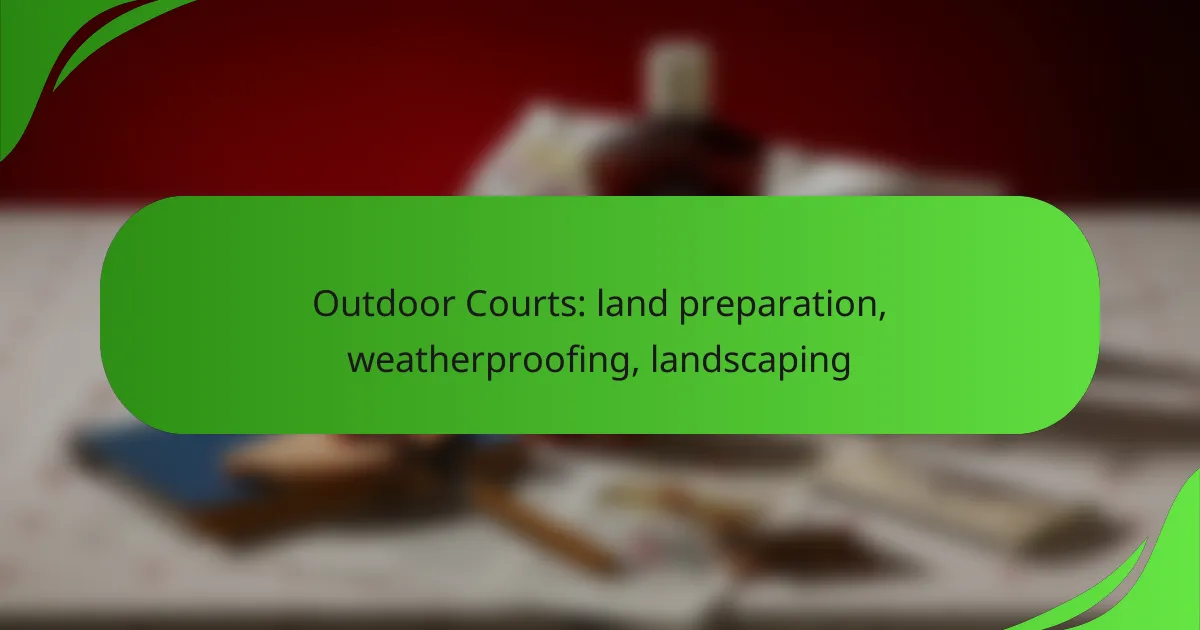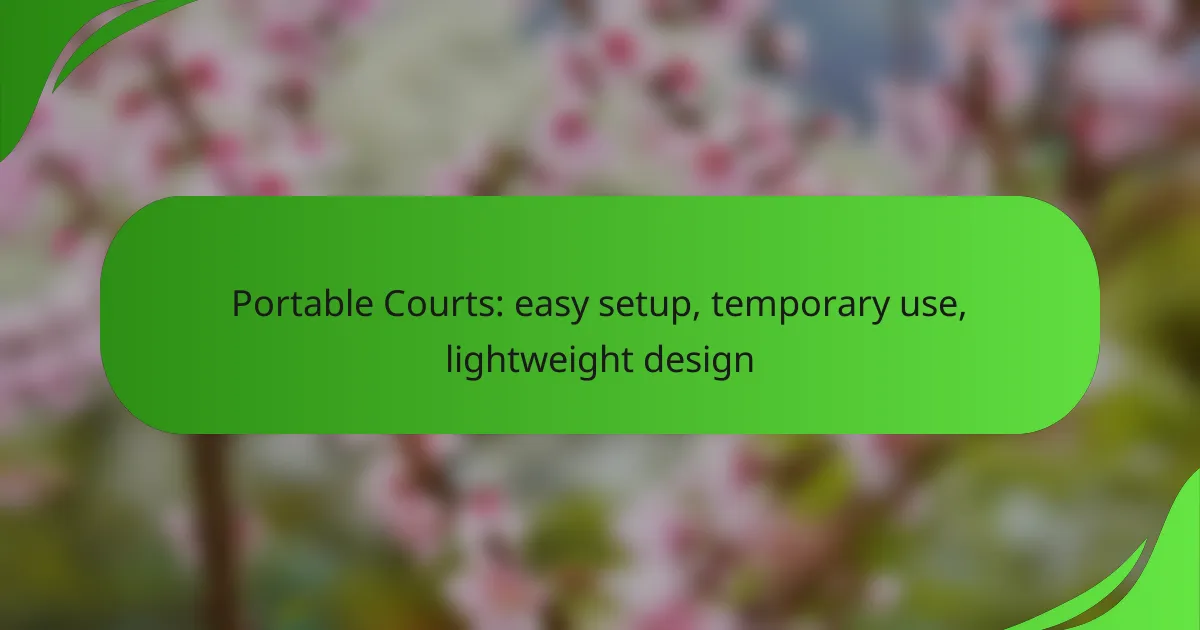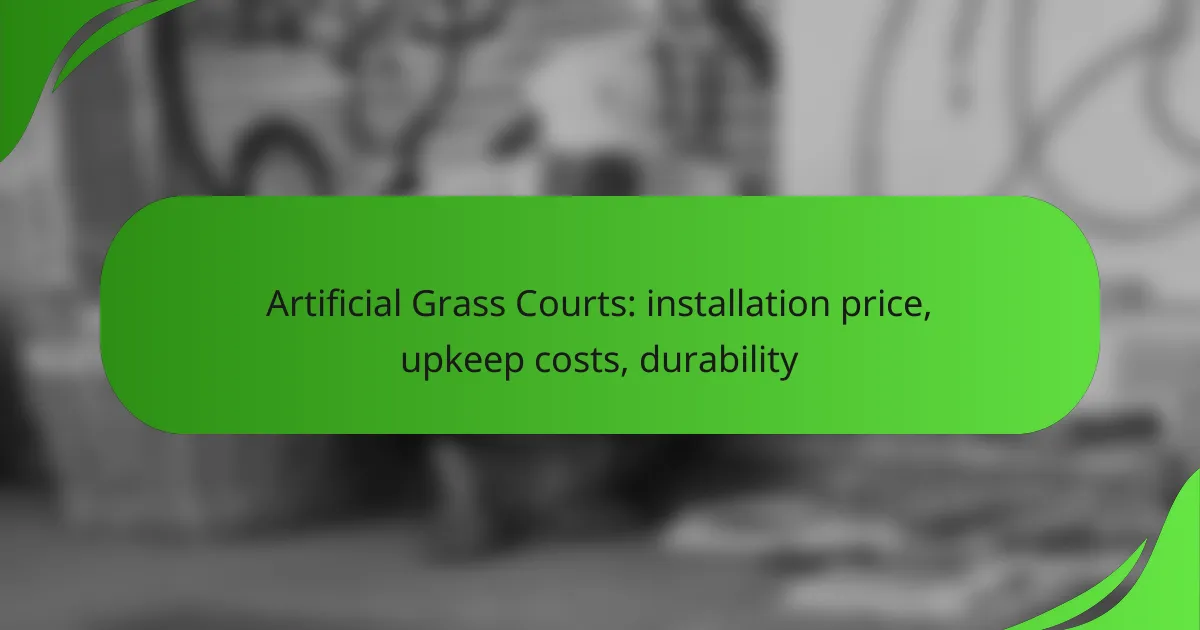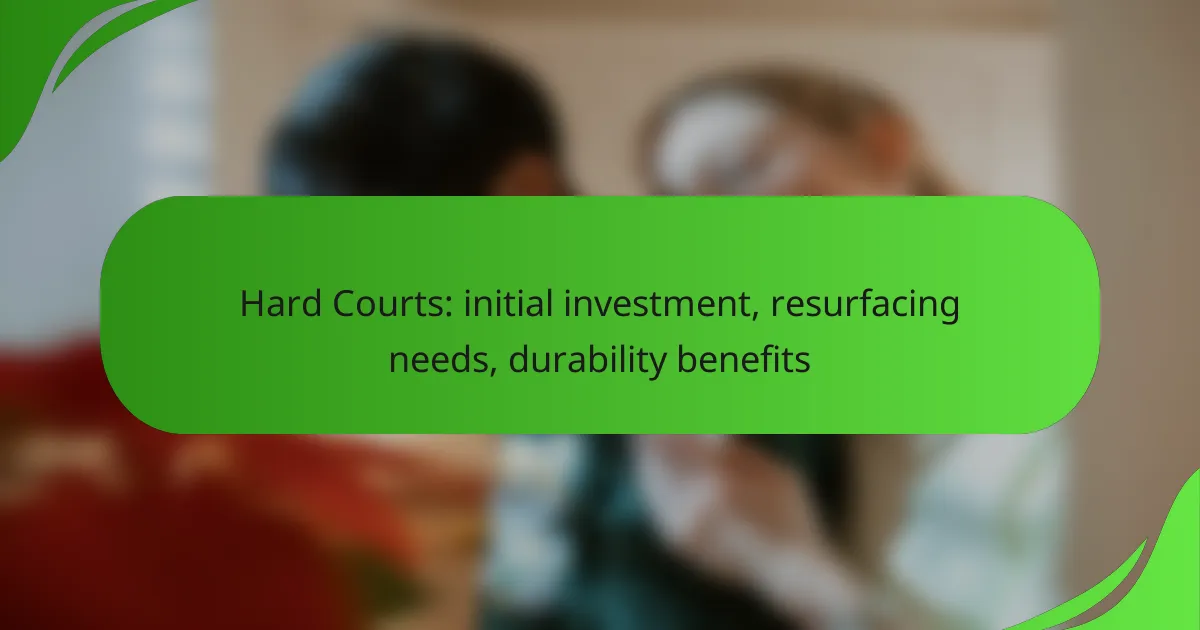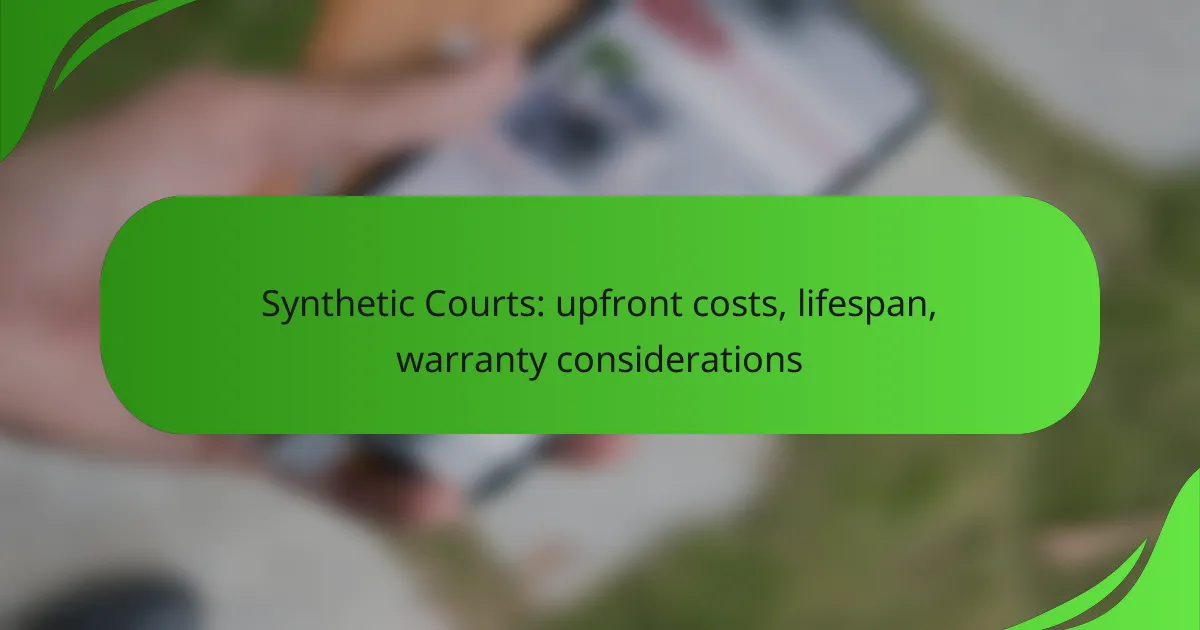Creating outdoor courts requires careful attention to land preparation, weatherproofing, and landscaping to ensure a high-quality playing surface and an inviting environment. Effective land preparation includes soil testing, proper grading, and adequate drainage, while weatherproofing involves using durable materials and regular maintenance to withstand various weather conditions. Additionally, thoughtful landscaping can enhance both the functionality and aesthetics of the courts, making them more enjoyable for users.
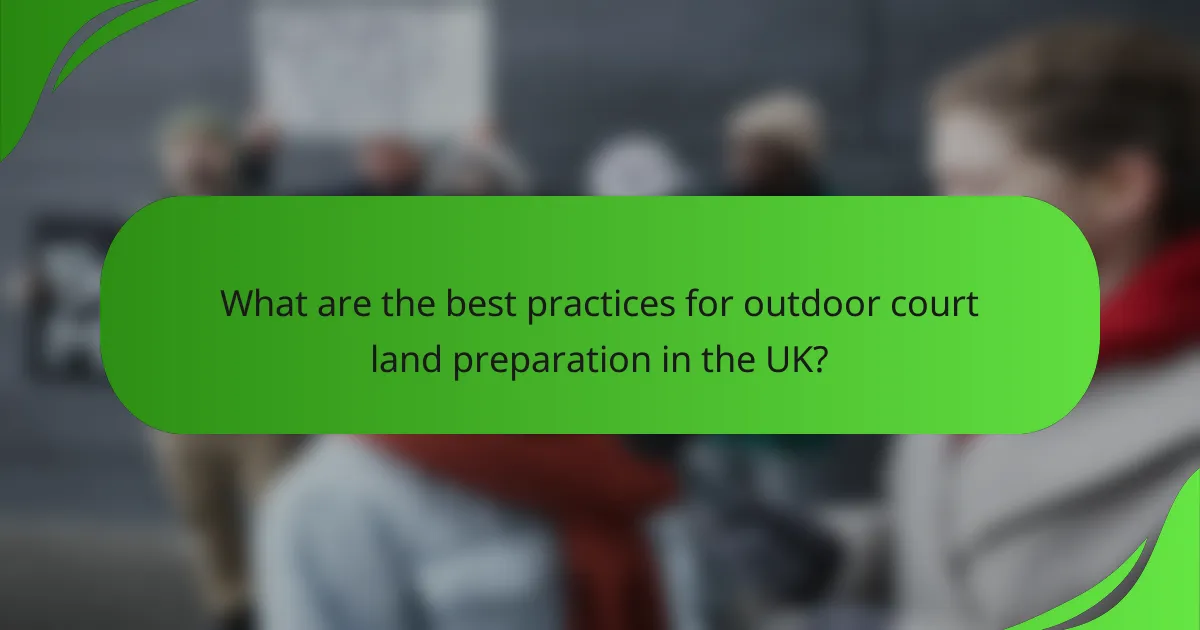
What are the best practices for outdoor court land preparation in the UK?
Effective land preparation for outdoor courts in the UK involves several key practices to ensure a durable and functional surface. Focus on soil testing, proper grading, effective drainage, suitable base materials, and adequate compaction to achieve optimal results.
Soil testing and analysis
Soil testing is essential to determine the composition and quality of the ground where the court will be built. Conduct tests for pH levels, nutrient content, and soil type to identify any amendments needed for optimal performance. This analysis helps in deciding the right materials and techniques for preparation.
In the UK, consider using a reputable laboratory for soil analysis, as they can provide detailed reports and recommendations tailored to local conditions. Regular testing can also help in maintaining the court over time.
Site grading and leveling
Site grading and leveling are crucial for ensuring a flat and even surface for the court. This process involves removing any debris, rocks, or vegetation and adjusting the land to create a consistent grade. Aim for a slight slope to facilitate water drainage away from the playing area.
Utilize machinery such as graders or bulldozers for larger sites, and hand tools for smaller areas. Ensure that the final surface is within a tolerance of a few centimeters to avoid uneven playing conditions.
Drainage solutions
Implementing effective drainage solutions is vital to prevent water accumulation on the court. Consider installing a combination of surface and subsurface drainage systems, such as French drains or perforated pipes, to manage excess water effectively.
In the UK, where rainfall can be frequent, ensure that the drainage system is designed to handle heavy downpours. Regular maintenance checks can help keep the drainage functional and prevent costly repairs.
Base material selection
Selecting the right base material is critical for the longevity and stability of the court. Common options include crushed stone, gravel, or a combination of both, which provide good drainage and support. The base should be at least 10-15 cm thick to ensure adequate support.
Consider local availability and cost when choosing materials, as well as their compatibility with the intended surface type, whether it be asphalt, concrete, or synthetic materials.
Compaction techniques
Proper compaction of the base material is necessary to create a solid foundation for the court. Use a mechanical plate compactor or roller to achieve the desired density, ensuring that the base is uniformly compacted to avoid future settling.
Compaction should be done in layers, with each layer being compacted before adding the next. Aim for a compaction level of at least 95% to ensure stability and durability of the court surface.
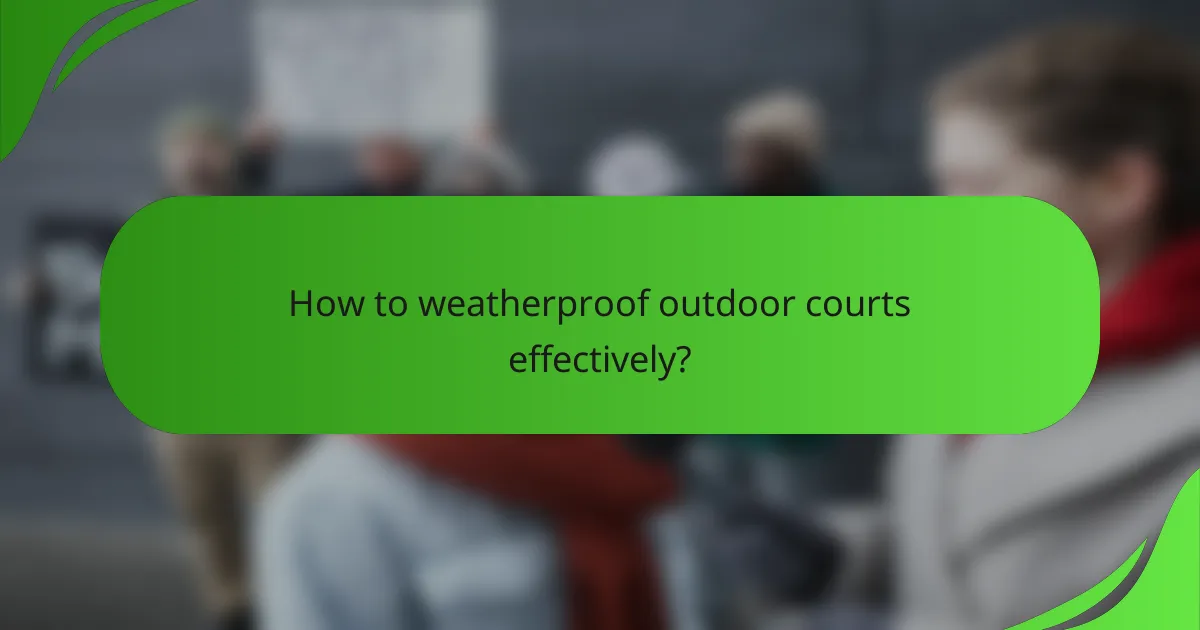
How to weatherproof outdoor courts effectively?
Weatherproofing outdoor courts involves using durable materials, applying protective coatings, ensuring proper drainage, and maintaining the surface regularly. These steps help extend the lifespan of the court and maintain its playability in various weather conditions.
Choosing weather-resistant materials
Selecting weather-resistant materials is crucial for outdoor courts. Options like acrylic surfaces, high-density polyethylene, or specialized asphalt can withstand moisture and temperature fluctuations. Consider local climate conditions when choosing materials to ensure they can endure extreme weather.
For example, in regions with heavy rainfall, opting for porous materials can help reduce water pooling. Always check for manufacturer specifications regarding UV resistance and freeze-thaw stability to ensure longevity.
Applying sealants and coatings
Applying sealants and coatings protects the court surface from moisture and wear. A high-quality sealant can create a barrier against water infiltration, preventing damage from freezing temperatures. Look for products specifically designed for outdoor sports surfaces.
Typically, sealants should be reapplied every few years, depending on usage and environmental exposure. Ensure the surface is clean and dry before application for optimal adhesion and effectiveness.
Installing proper drainage systems
Effective drainage systems are essential for maintaining outdoor courts. Proper drainage prevents water accumulation, which can lead to surface damage and safety hazards. Consider installing a combination of surface drains and subsurface drainage to manage water flow efficiently.
Evaluate the court’s slope and ensure it directs water away from the playing area. Regularly check and clear drains to prevent blockages that could compromise the drainage system’s effectiveness.
Regular maintenance practices
Regular maintenance is key to preserving the integrity of weatherproofed outdoor courts. Routine inspections should include checking for cracks, surface wear, and drainage efficiency. Addressing minor issues promptly can prevent more significant repairs later.
Establish a maintenance schedule that includes cleaning the surface, applying sealants, and checking drainage systems. This proactive approach can extend the life of the court and ensure it remains safe and playable throughout the year.

What landscaping options enhance outdoor courts?
Landscaping around outdoor courts can significantly improve their functionality and aesthetics. Key options include selecting native plants, creating windbreaks and shade, incorporating seating areas, and using permeable paving.
Native plant selection
Choosing native plants for landscaping enhances outdoor courts by promoting local biodiversity and requiring less maintenance. These plants are adapted to the local climate and soil conditions, making them more resilient to pests and diseases.
Consider plants that thrive in your region’s specific conditions, such as drought-resistant varieties in arid areas or moisture-loving species in wetter climates. A mix of grasses, shrubs, and flowering plants can create a vibrant and inviting environment.
Creating windbreaks and shade
Windbreaks and shade structures are essential for improving comfort and usability around outdoor courts. Trees, tall shrubs, or strategically placed fences can block wind, while shade can be provided by canopies or pergolas.
When planning, consider the sun’s path and prevailing winds to maximize effectiveness. For example, planting deciduous trees on the west side can provide shade in the summer while allowing sunlight in during winter months.
Incorporating seating areas
Seating areas enhance the social aspect of outdoor courts, providing a place for spectators and players to relax. Benches, picnic tables, or even natural seating made from logs can be effective options.
Position seating to allow clear views of the court while ensuring it is sheltered from wind and sun. Durable materials like treated wood or metal are recommended for longevity and ease of maintenance.
Using permeable paving
Permeable paving is an excellent choice for pathways and seating areas around outdoor courts, as it allows water to drain through, reducing runoff and erosion. This type of paving can include porous asphalt, permeable concrete, or interlocking pavers.
When selecting permeable options, ensure they are suitable for your local climate and soil type. Proper installation is crucial to maintain drainage efficiency and prevent pooling water, which can damage surrounding landscaping.
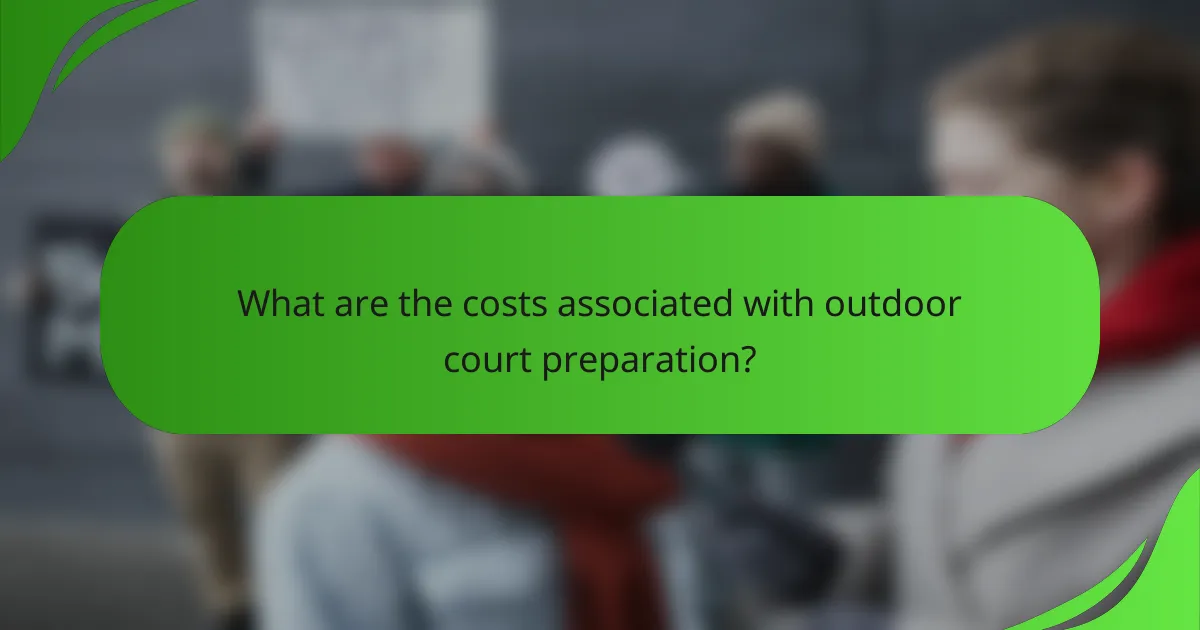
What are the costs associated with outdoor court preparation?
The costs for outdoor court preparation can vary significantly based on materials, labor, and ongoing maintenance. Understanding these expenses helps in budgeting for the project effectively.
Material costs breakdown
Material costs for outdoor court preparation typically include items like asphalt or concrete, paint for lines, and fencing. Depending on the type of court—tennis, basketball, or multi-sport—the materials can range from a few thousand to tens of thousands of dollars.
For example, a basic asphalt court may cost around $5,000 to $15,000, while a more complex surface like a cushioned acrylic can push costs higher. It’s essential to source quality materials to ensure durability and compliance with relevant sports standards.
Labor expenses in the UK
Labor expenses for preparing outdoor courts in the UK can vary based on location and contractor expertise. Generally, you might expect to pay between £20 to £50 per hour for skilled labor.
For a complete court installation, labor costs can add up to 30-50% of the total project budget. Hiring experienced contractors familiar with local regulations can help avoid costly mistakes and ensure a high-quality finish.
Long-term maintenance costs
Long-term maintenance costs for outdoor courts should be factored into the overall budget. Regular upkeep, including resurfacing, cleaning, and repairs, can range from a few hundred to several thousand pounds annually, depending on usage and weather conditions.
It’s advisable to set aside around 5-10% of the initial investment each year for maintenance. This proactive approach can extend the court’s lifespan and keep it in playable condition, ensuring a better return on your investment.
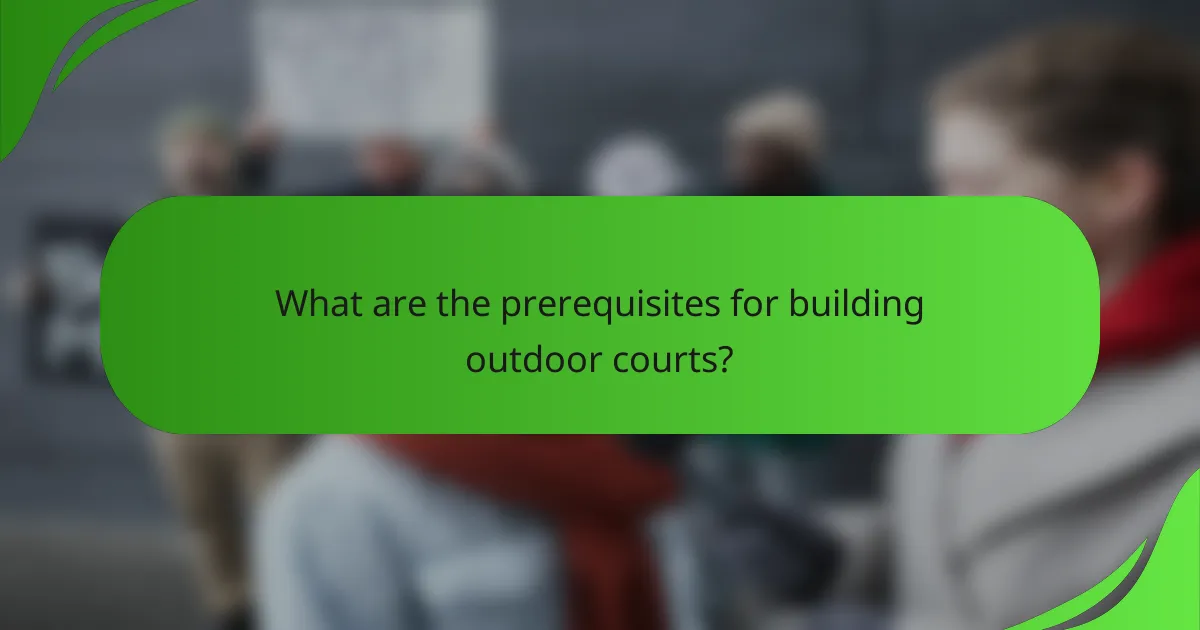
What are the prerequisites for building outdoor courts?
Building outdoor courts requires careful planning and preparation, focusing on land preparation, weatherproofing, and landscaping. These prerequisites ensure the court’s longevity, functionality, and suitability for various weather conditions.
Land preparation
Land preparation is crucial for creating a stable foundation for outdoor courts. This involves clearing the area of debris, vegetation, and any existing structures. The ground should be leveled and compacted to prevent future settling, which can lead to uneven surfaces.
Consider soil type and drainage when preparing the land. Sandy soils typically drain well, while clay soils may require additional drainage solutions to avoid water pooling. A well-drained site will enhance the court’s usability and durability.
Weatherproofing
Weatherproofing protects outdoor courts from the elements, extending their lifespan. This can include applying sealants to surfaces, using weather-resistant materials, and ensuring proper drainage systems are in place to manage rainwater effectively.
In regions with harsh winters, consider using materials that can withstand freeze-thaw cycles. Regular maintenance, such as checking for cracks and applying protective coatings, is essential to maintain the court’s integrity over time.
Landscaping
Landscaping around outdoor courts enhances aesthetics and functionality. Proper landscaping can provide shade, reduce glare, and improve the overall environment for players. Planting trees or shrubs strategically can help shield the court from wind and sun.
Choose low-maintenance plants that can withstand local climate conditions. Additionally, consider installing pathways or seating areas to improve accessibility and comfort for players and spectators alike.
